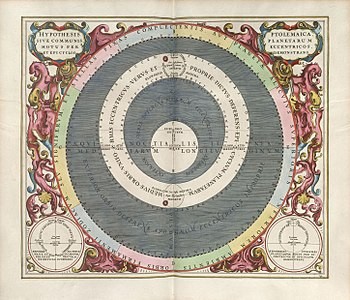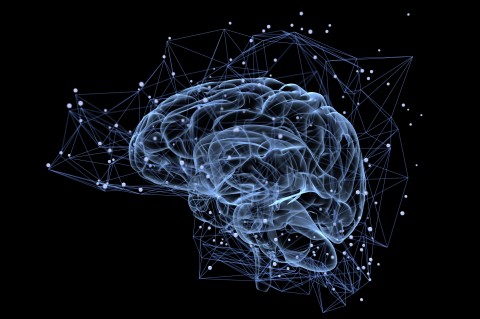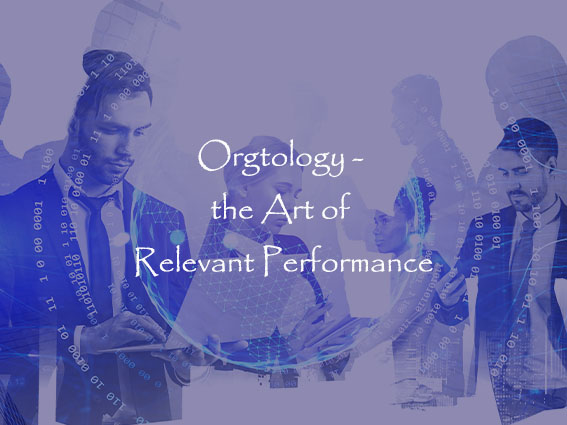Please Note:
This article is replaced with a new version.
We are leaving this old version on the site for research purposes.
Please click on the link below to access the latest version of this article.

What is Orgamatics?
Orgamatics is the arm of orgtology that studies workplace systems. It is a theoretical model that consists of four theories, which I briefly describe here. Through these theories we can cluster the generic functions of Org within systems. A system is a container for processes that have similar purpose. In orgamatics, operations are the repetitive work within Org. Therefore, operations are the sum of all systems and their processes. Strategy will be the non-repetitive work that we must do to change things. Operations drive performance and strategy drives relevance. In orgamatics we work with three basic systems that aim to help Org to perform and stay relevant. They are the resource-; orgtelligence-; and relationship- systems. I discuss each of them below. The task of orgamatics is to ensure a Relevant and Performing Organisation (RPO). We emphasise relevance and performance as different things, since we cannot achieve them in the same way. Relevance is about doing the right things. Performance is about doing things right. Their mathematics do not only differ but are also inverse. This means that an increase in effort to stay relevant will decrease the effort to perform. This is because both efforts will draw from the same resource pool. The three orgamatics systems help us to manage this equilibrium.
(1) The link between Orgamatics and Hypothesis 2x
One begins to grasp orgamatics through Hypothesis 2x of inverse duality. This is the core assumption of orgtology. In line with this hypothesis, all the theories of orgamatics have a dual nature. This means that each theory holds two concepts, one being receptive and the other being projective. Within Org, these relationships are inverse. This means that where you decrease the value of one, the value of its dual side will increase. The aim is to find equilibrium between dual concepts. E.g., Strategy drives relevance whilst operations ensure performance. We must know how much our common resource pool will aid the funding of each. In this example, the energy that we can use for operations will impact the energy we have for strategy.

Hypothesis 2x on Inverse Duality
(2) The four theories of Orgamatics
| Theory: | Description: |
| Theory
2I of Orgtelligence (human intellect and systems intelligence) |
Orgtelligence is the sum of all systems and human intelligence within Org. Here we relate the implied intelligence of systems with tacit intellect of humans. A systemic construct owns implied intelligence, whilst humans own tacit intellect. |
|
Theory
2P of Work (projects and processes) | The world does all its work within organisations. To do this work, you must either do something repetitive or something that is not. In orgamatics we see the former as a cyclic process and the latter as a project. This theory relates to the relation between process-based work and project-based work. |
|
Theory 2E of Results (effectiveness and efficiency) | This theory aims to quantify what we achieve. It helps us to gasp the relationship between performance and relevance. Efficiency will measure our performance whilst effectiveness measures our relevance. The theory helps us to understand the results of Org. |
|
Theory O of the RPO (relevance and performance) | This theory brings together the other three. It explains what a Relevant and Performing Organisation (RPO) is. It also gives a mathematical construct for creating an RPO. Where the other three theories intersect, they create an RPO ability. |
(3) The three constructs of Org
The theories of orgamatics give rise to three organisational constructs. They are the process-, project-, and relationship- constructs. A construct is the idea behind a physical manifestation. Unlike a structure it is not physical. A construct is a blueprint for the flow of activity that create outputs, outcomes, and relationships. It is a consciousness of how things work. When an architect designs a house, the design will need a project plan. Jointly, these plans create a project construct that will bring about a structure. Once the house is built, there will be processes that maintain the house. If one would depict these processes, one will have a process construct. The house will facilitate the interaction of humans. This brings about a relationship construct. These constructs are ideas that aim to manifest in physical form. A construct always precedes activity. In Org, form follows consciousness.
(3.1) Process Construct:
The process construct holds all the repetitive work of Org. Unlike a structure, a construct is not tangible. We can only make assumptions about a process; we can never touch or see it. What we see is a manifestation thereof. In that sense, a factory conveyer belt is the structural manifestation of a process. The process itself is a mathematical construct of the flow of activity. The conveyer belt brings such process to life. In nature we have the eco system. We can see caterpillars becoming butterflies. Behind that structural manifestation, there is a mathematical construct. That is the process construct. To understand a process construct, we must understand its parts. These are:
- Rules or operating procedures that control the process.
- Dependency of activity that control flow and priority of activity.
- "If – Then" conditions that control the prerequisites for activity to flow.
- Outputs that show the results of a process.
- Resources, which the process will need to flow.
(3.2) Project Construct:
The project construct holds all the non-repetitive work of Org. The aim of a project construct is to interlink all the projects within Org. Unlike the process construct, a project construct has a short life span. The task of a project is to start, end, or fix a process. Once this is done, the project dies. The project construct thus manages change within Org. In so, it drives the future.
(3.3) Relationship Construct:
We do all the work of Org through relationships. Without relationships, Org will die. This construct holds the rules and dynamics of the relationships that Org must have. The aim of a relationship construct is to help Org create reciprocal value between output and outcome. Where Org interacts with its environment, it negotiates a value proposition that must ensure a favourable benefit for all parties involved.
The Venn diagram below shows the effect of the constructs of Org on performance, relevance, and work.
- The relationship and process constructs of Org will define its ability to perform.
- The relationship and project constructs of Org will define its ability to stay relevant.
- The process and project constructs of Org will define its work.
(4) Clustering Org into three systems
Trough analysing the constructs of Org, we can control activity. This will give predictable outputs and drive favourable outcomes. To manage the complexity of activity, one must cluster work in such a way that both humans and systems can interact in a meaningful way.
Old models of design pose that we cluster humans according to functionality, location, products, etc. Yet, systems only respond to purpose. This creates conflict. E.g., a HR department would have recruitment-, training-, performance-, and labour relations-officers. They will be in the same department and meet regularly to discuss HR stuff. To a system HR is not a purpose. Providing resources to Org is. Resources come in various forms. There is people, money, and assets. They have different complexities and so we must manage them differently. Yet, they do the same thing, which is to give energy to Org. That locks them into one system – a resource system. This means that recruitment has more in common with budgeting and procurement than it has with training, performance assessment, and labour relations. In so, training and performance assessment assesses the past to predict and work with the future. In that, it has a lot in common with financial accounting and internal auditing. Labour relations manage the reciprocity of a relationship. This is similar to what CRM and stakeholder relations does.
To resolve this, we must decide which purposes will ensure the relevance and performance of Org. First, Org needs energy, which brings about a resource system. Second Org must be intelligent that drives process efficiency and project effectiveness. This requires an orgtelligence system. Lastly, Org will only be meaningful trough relationships. This requires a relationship system. There is also a core business system, but due to its unique nature, I do not cover it in this post.
(4.1) The Resource System:
The resource system facilitates the people, money, and assets that Org needs. It gets resources into Org, consumes them, and then disposes of them. It is a cold and mechanical system that only has one focus, which is to be efficient. Here we work with recruitment; procurement; cost management; discipline; retrenchment; logistics; asset disposal; etc.
(4.2) The Orgtelligence System:
Orgtelligence manages both the abstract and implied intelligence of Org. The aim of this system is to do the right things right. Orgtelligence begins with research. This helps us to learn or unlearn. We create orgtelligence through analysing EOP (Exposure, Opportunities, and Process). We deal with risk through mitigation and contingency plans. We use strategy to manage opportunities and transformation to deal with process efficiency and dynamics. Examples of orgtelligence initiatives are assessments; accounting; performance management; human resource development; strategy; risk mitigation; contingency plans; internal audit; etc.

The EOP Analysis – redefining how we understand organisations
(4.3) The Relationship System:
A relationship system manages the relationships of Org. Without relationships, Org will not survive. Examples are CRM; call centres; marketing; communications; stakeholder relations; labour relations; etc. The importance of a relationships will depend on its contribution towards the relevance and performance of Org. The purpose and intent of Org will make relationships purposeful and intentional.
(4.4) Effect of the "three-tyre" systems approach
In orgamatics we cluster process flow within purpose. In other words, we do not ask; "What must we do within our department, division, or unit?". Rather we ask; "What energy does Org need, and how must it consume such energy?"; "What intelligence must Org process to stay relevant?"; and "Which relationships must Org hone to make sure that it stays sponsored?". In so, something such as "recruitment" would be part of a "resource system"; whilst "performance assessment" will be part of an "orgtelligence system"; and "labour relations" is part of a "relationship system". This means that e.g., a department such as HR will enable three distinct systems. In orgamatics we do not see a unit or department as a process, but instead we view it as a practical container that enables our systems. Therefore, our systems are the non-physical construct of Org, and its structure and infrastructures are its physical manifestations.
This overview of orgamatics can by no means account for the wide range that it covers. It is a study of all activity within Org. However, it does exclude a study of the human dynamics that happens within Org. For the latter, we study organamics.
Orgamatics is...
| One Hypothesis | Four Theories | Three Constructs | Three Systems | Numerous Applications |
| Hypothesis 2x on Inverse Duality | Theory 2I of Orgtelligence Theory 2P of Work Theory 2E of Results Theory O of the RPO | Process Construct Project Construct Relationship Construct | Resource System Orgtelligence System Relationship System | Strategy Operations Process engineering Project management Perfromance management Risk management Cost management Organisational design and structure Procurement Recruitment & selection Policies & procedures Stakeholder relations Marketing Sales CRM Labour relations (any system within Org) |
If you are interested to learn more, I suggest that you enrol for the IOI online "Practice of Orgtology" programme. This will enable you to register as an Orgtologist or Orgtology Specialist. You can get more info from the website www.orgtology.org.



